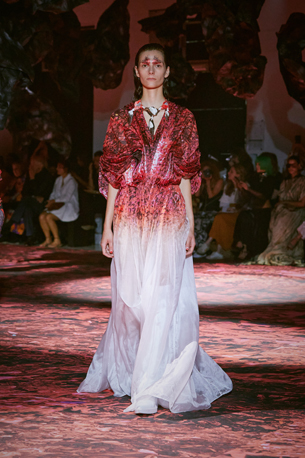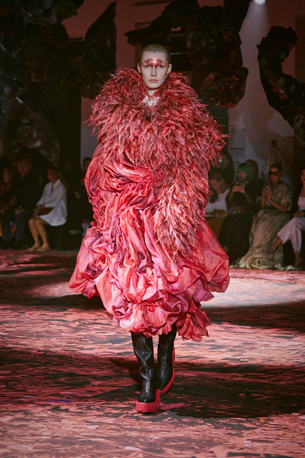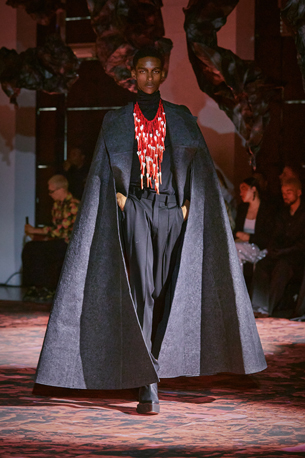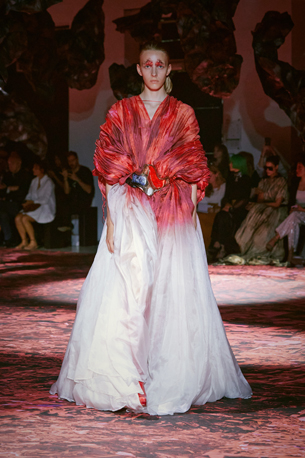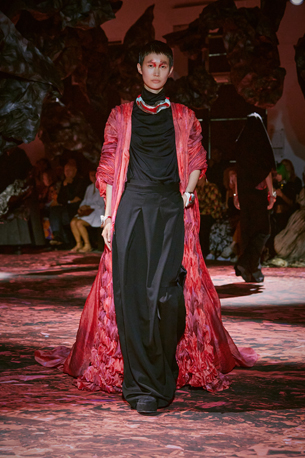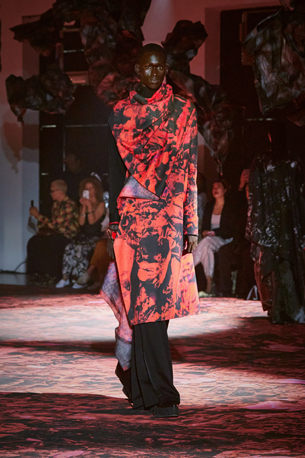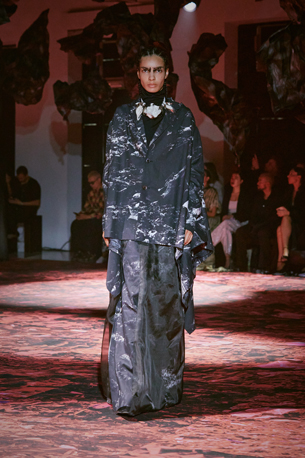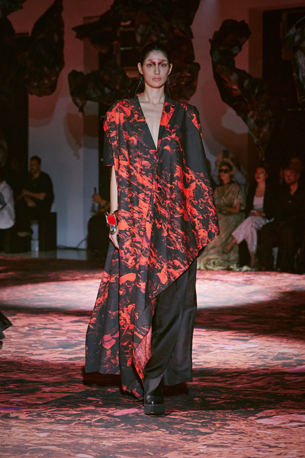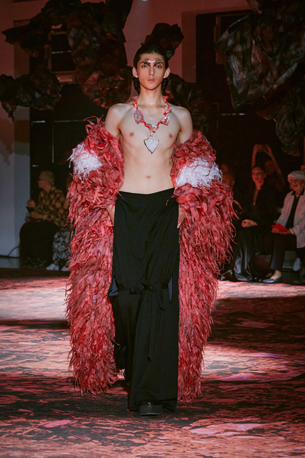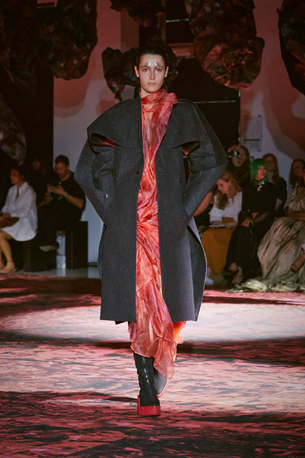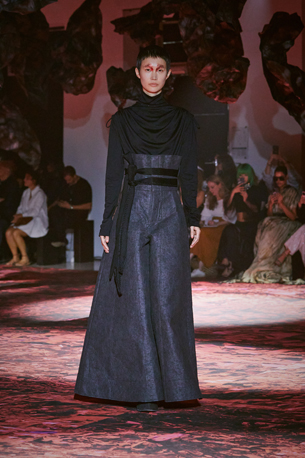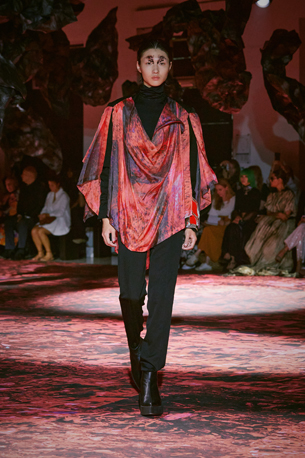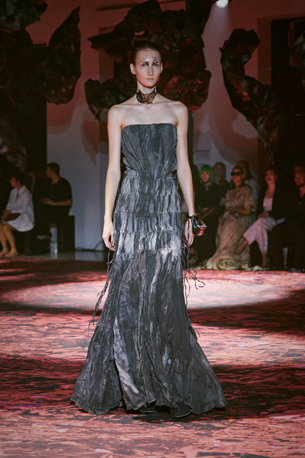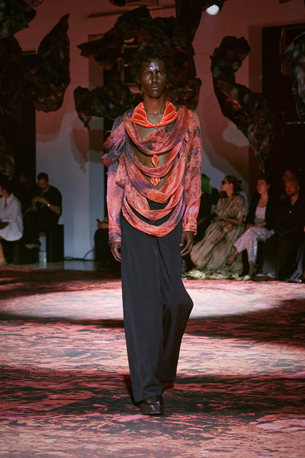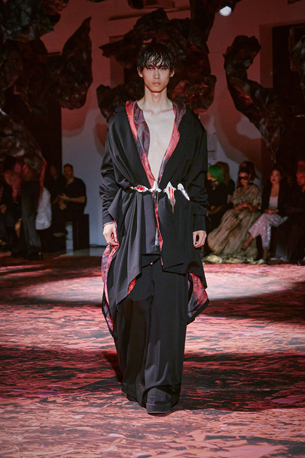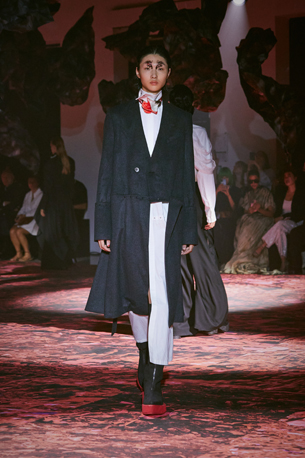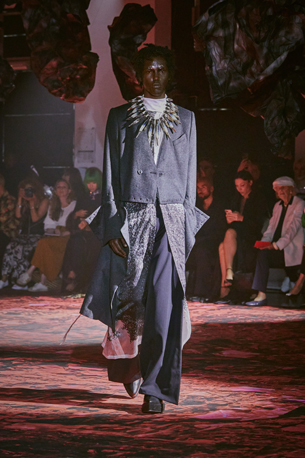The future of fashion co-created with YUIMA NAKAZATO


Epson provided production support for some of the pieces in MAGMA, YUIMA NAKAZATO's new collection, which is unveiled at Paris Haute Couture Fashion Week Autumn/Winter 2023-24 on 5 July 2023. Epson and YUIMA NAKAZATO first formed a partnership prior to the previous spring-summer collection, with Epson providing technology for the printing of fabric using an Epson digital textile printer, the production of non-woven fabric from used garments using Dry Fiber Technology (DFT), and venue decoration using prints on paper of photographs taken by Mr. Nakazato himself.
The Most Recent Collection
Mr. Nakazato commented on the theme of this collection as follows:
The shocking experiences I had during my 2022 visit to Kenya still remain vivid in my mind to this day. Among the many memories I have of that time, the mountains of garbage I saw are particularly hard to forget. The spontaneous flames, the reeking odors, the garish colors of the plastic trash-it seemed like the end of the world, and it left my head spinning.
The other day, I saw a piece by Hokusai commonly known as "Aka-Fuji" at an art gallery. This scene of Fuji in red called to mind thoughts of the magma sleeping within the mountain, and somehow made me aware not only of its beauty, but also of the spooky nature of the landscape as well.
This is it, I thought. Using a photo I had taken while in Kenya, I graded it all in red and printed it out on a piece of fabric. Suddenly, the awful scenery became abstract, and the mounds of man-made garbage somehow turned into something almost like a landscape.
At that moment, I realized that it was possible to reconsider the essential meaning of a thing, thereby endowing it with a new meaning and an entirely different value.
Red usually represents warning or crises. However, rather than viewing it as an alert to the environmental issues facing us today, I've chosen to put my belief in the color red, and use it to express my conviction that there is a way for us to change the future.
Epson and YUIMA NAKAZATO began preparations in April to refine and elevate the concept and design for this collection. Mr. Nakazato visited Epson Solution Center Fujimi for discussions that would enhance the final products by faithfully reproducing the feel, texture, and colors of his sketches.
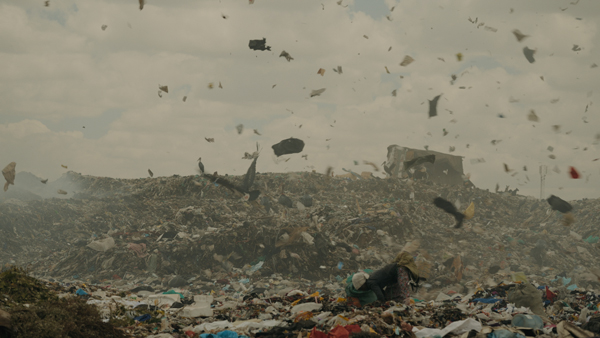
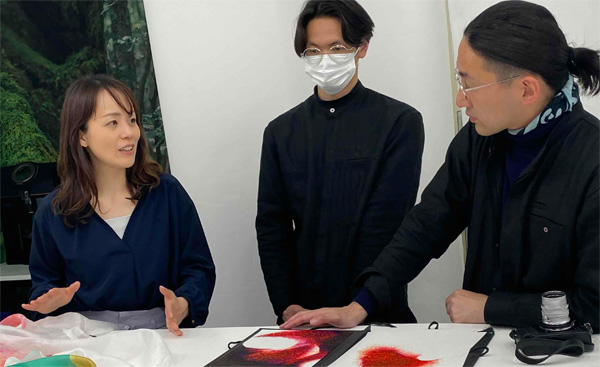
Maximizing Garment Quality While Minimizing Environmental Impact
Mr. Nakazato, who uses pigment inks in the printing of garments, has long insisted on a production process for his works that does not need post-printing steaming and washing and that minimizes the amount of water used. A new type of Epson digital textile printer, an ML-13000 prototype, was used for some pieces in the collection. This printer uses a pigment ink process that reduces water use by up to 96%1 compared to conventional analog textile printing with dye-based ink. Moreover, the pre-treatment necessary for fabrics to be printed is carried out inside the printer. So, not only does this new digital textile printer significantly reduce environmental impact, it also improves production efficiency. In addition to ink, the ML-13000 can eject three different types of liquid on the fabric in only the volumes needed, enabling greater color, brightness, fastness, and flexibility.
This process allows Mr. Nakazato to create garments that highlight his red designs while preserving the soft texture of silk organdy.
1Source: Fuluhashi Environmental Institute, 2021 "Report on Direct Water Input in Digital Textile Printing"
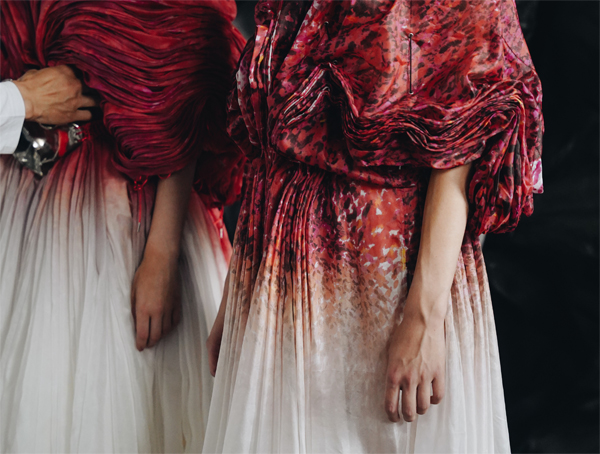 ©thestreetpie
©thestreetpie
The Evolution of Nonwoven Fabrics Using Dry Fiber Technology
Nonwoven fabric made from old clothing was used in Nakazato's previous collection. For this collection, however, a new nonwoven fabric was produced. Old clothing that Mr. Nakazato purchased during a visit to Kenya, to which mountains of discarded clothing are shipped from around the world, was upcycled into garments using Dry Fiber Technology.
In response to Mr. Nakazato's desire for textiles with an improved feel and greater strength, Epson evolved a pressed, nonwoven fabric that was as thin as possible. Some of the costumes in this collection feature fabric printed with a solid black design using a digital textile printer.
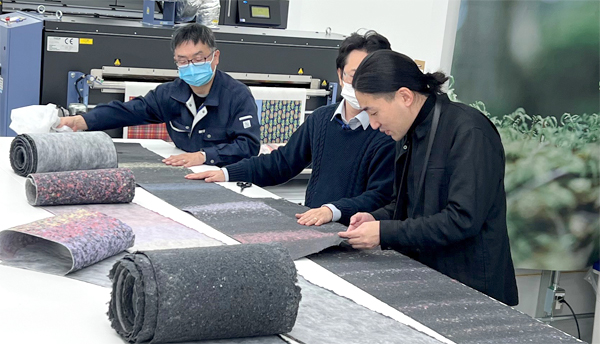
Original Printed Works Used in Venue Decoration
Epson's digital printing technology was also used in the production of floor prints that covered the stage and in decorative spatial structures that were suspended in the venue.
The floor prints featured photos taken in Kenya that were converted to red tones. A large-format printer at Epson's Solution Center in Hirooka was used to make print tests and complete color management. The data was then sent to a printing company on the outskirts of Paris, near the show venue. That company printed the photos onto matte paper and then delivered the prints for the show.
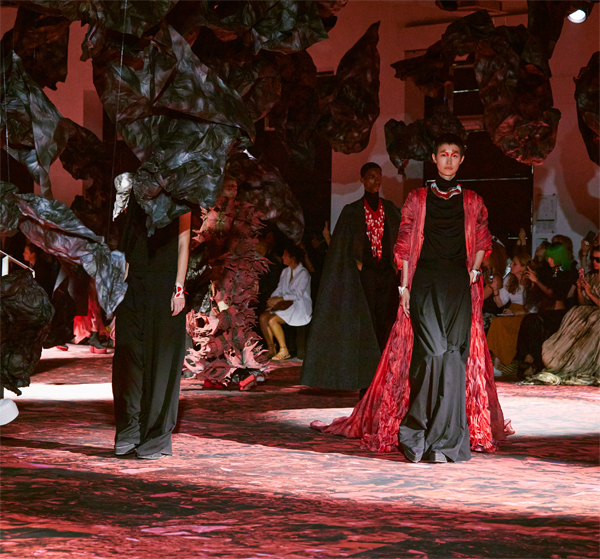 ©Luca Tombolini
©Luca Tombolini



